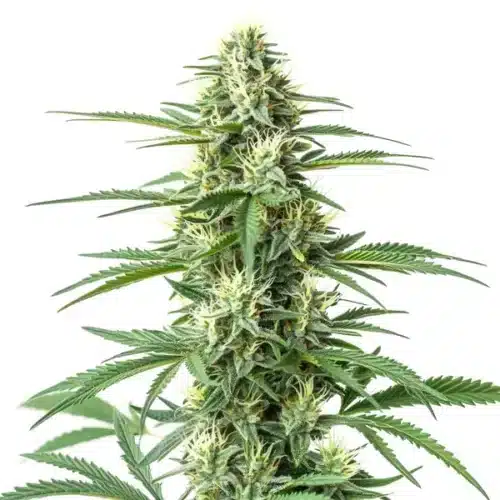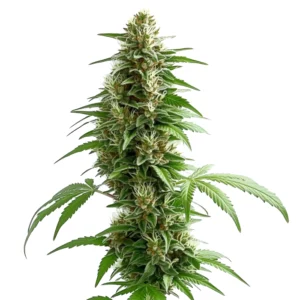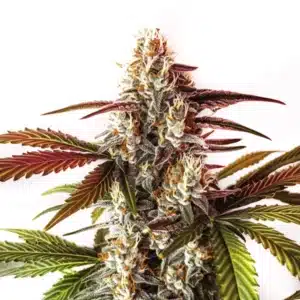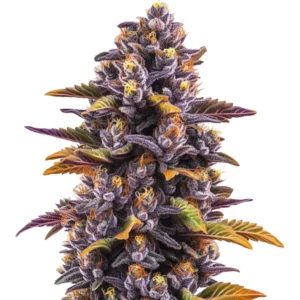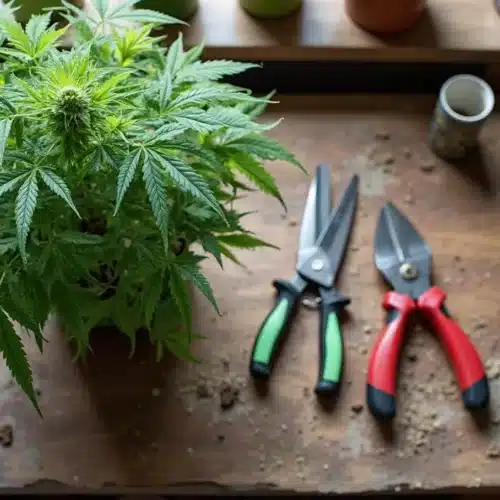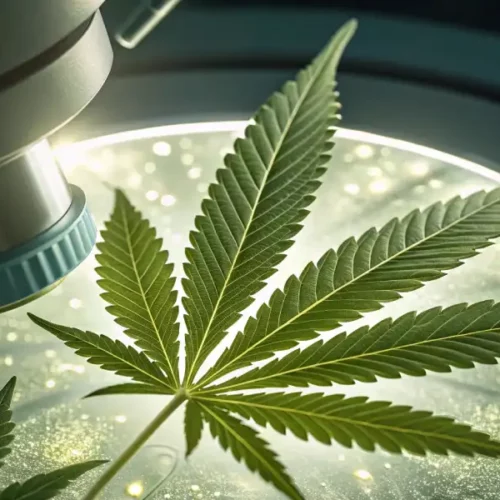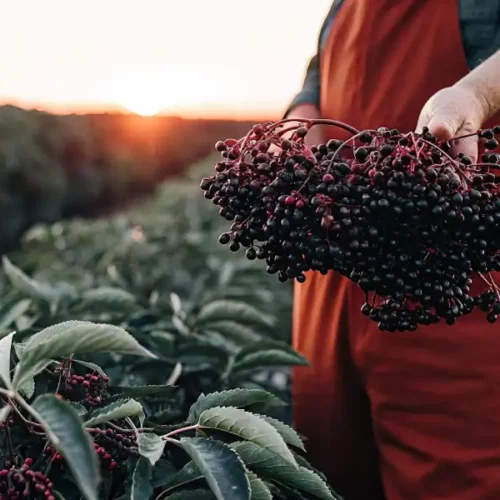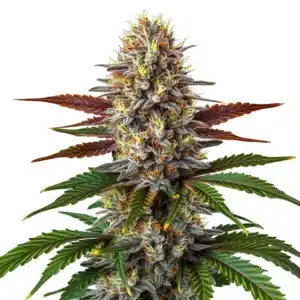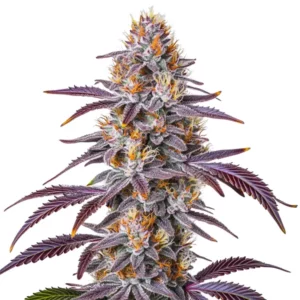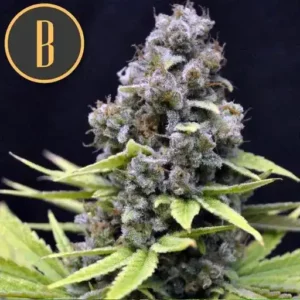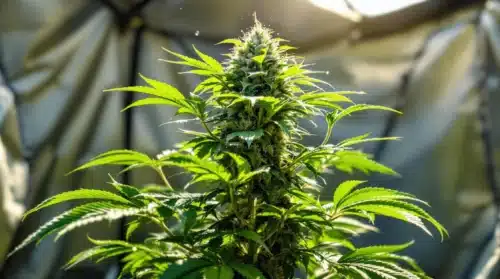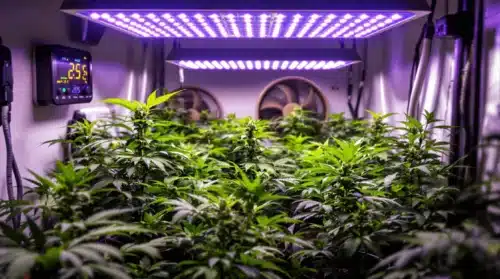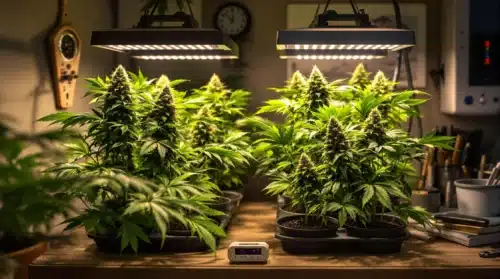Critical Daddy Purple Strain Grown Info
Exceptional Genetics and Effects
Critical Daddy Purple is a powerhouse strain that merges robust genetics with visually stunning appeal. This hybrid is a cross between Critical Mass and Granddaddy Purple, two well-loved strains recognized for their high yields, resilience, and strong effects. With a 70% indica and 30% sativa composition, Critical Daddy Purple is perfectly balanced for growers seeking a versatile plant. The THC levels typically range between 18% and 22%, providing a potent yet smooth experience.
Recommended Strains
CBD Critical Mass (1:1)
 THC: 5%
THC: 5% Type of seed: CBD
Type of seed: CBD Phenotype: Mostly Indica
Phenotype: Mostly Indica Day to flower: 8 - 10 weeks
Day to flower: 8 - 10 weeks
Purple Kush
 THC: 17% - 27%
THC: 17% - 27% Type of seed: Feminized
Type of seed: Feminized Phenotype: Mostly Sativa
Phenotype: Mostly Sativa Day to flower: 8 - 10 weeks
Day to flower: 8 - 10 weeks
The effects of Critical Daddy Purple are deeply relaxing, making it an excellent choice for evening use. Its indica dominance delivers a calming body high, while the sativa side adds a touch of cerebral euphoria. The strain is also known for its sweet, fruity aroma with hints of grape and citrus, making it a pleasure to grow and consume. Additionally, the dense buds of Critical Daddy Purple often display vibrant purple hues, enhancing its visual appeal.
This strain’s medicinal potential is also noteworthy. Users often report relief from chronic pain, insomnia, and stress, making it a favorite among medical cannabis users. With proper care, Critical Daddy Purple rewards growers with a visually stunning and highly effective harvest.
Promos & Deals
Environmental Requirements for Growing Critical Daddy Purple Indoors
Critical Daddy Purple thrives in controlled indoor environments, where growers can maximize its potential. Here are the key environmental conditions to consider:
- Temperature and Humidity: Maintain a temperature range of 20°C to 26°C (68°F to 78°F) during the day, and slightly cooler temperatures at night. Humidity should be kept between 40% and 60% during the vegetative stage, reducing to 30%-40% during flowering to prevent mold.
- Lighting Requirements: Use high-quality LED grow lights to provide sufficient light intensity. During the vegetative stage, maintain an 18/6 light cycle (18 hours of light, 6 hours of darkness). Transition to a 12/12 cycle during flowering to encourage bud development. For optimal results, choose full-spectrum LED lights, which mimic natural sunlight and enhance plant growth.
- Air Circulation: Proper airflow is essential. Stagnant air can lead to mold and mildew, especially in dense canopies. Install oscillating fans to ensure consistent air movement around the plants. This not only prevents fungal growth but also strengthens plant stems, preparing them to support heavy buds.
Setting Up the Growing Space
Creating an optimal indoor growing environment is critical to the success of your Critical Daddy Purple plants.
- Grow Tent or Room: Use a grow tent or a dedicated grow room to create a controlled environment. Ensure the space is light-proof to avoid interruptions during the dark period. Reflective interiors in grow tents maximize light efficiency, ensuring even light distribution to all parts of the plant.
- Ventilation and Airflow: Proper airflow is essential to prevent mold and pests. Use oscillating fans and an exhaust system with a carbon filter to maintain fresh air and eliminate odors. Inline fans connected to air ducts can further enhance ventilation, ensuring a consistent exchange of air.
- Growing Medium: Critical Daddy Purple performs well in soil, coco coir, or hydroponic setups. For soil growers, use a nutrient-rich organic mix. For hydroponics, ensure the nutrient solution’s pH is consistently between 5.5 and 6.5. Adding perlite to soil can improve drainage, preventing waterlogging and promoting root aeration.
Propagation and Germination of Critical Daddy Purple
Start with high-quality seeds to ensure strong and healthy plants.
- Germination Method: Place seeds in a damp paper towel inside a sealed plastic bag. Keep it in a warm, dark place. Within 24 to 72 hours, the seeds should sprout. Alternatively, growers can use rapid rooter plugs, which provide a stable environment for germinating seeds.
- Planting: Once the seeds germinate, plant them in small pots with a light potting mix. Maintain temperatures of around 22°C (72°F) and provide adequate light to encourage seedling growth. Seedlings should receive gentle airflow to strengthen their stems.
Vegetative Phase of Critical Daddy Purple
During the vegetative stage, the plant focuses on developing strong roots and healthy foliage.
- Nutrients: Use a nitrogen-rich fertilizer to support lush growth. Feed the plants every 1-2 weeks and adjust based on their response. Consider supplementing with silica, which helps strengthen cell walls and enhances the plant’s resistance to stress.
- Watering: Water when the top 2-3 cm of soil feels dry. Avoid overwatering, as it can lead to root rot. Use dechlorinated water to prevent damage to beneficial soil microbes.
- Training: Employ low-stress training (LST) or topping techniques to maximize light exposure and promote bushy growth. Screen of Green (ScrOG) methods can also be used to create an even canopy, optimizing light distribution.
Flowering Phase of Critical Daddy Purple
The flowering stage is when Critical Daddy Purple showcases its vibrant purple hues and dense buds.
- Light Cycle: Switch to a 12/12 light cycle to initiate flowering. This change mimics natural light conditions in late summer and fall.
- Nutrient Adjustment: Transition to a bloom fertilizer high in phosphorus and potassium. This encourages bud formation and resin production. Consider adding molasses to the watering schedule during late flowering to enhance terpene profiles and flavor.
- Monitoring: Keep a close eye on humidity levels, ensuring they remain below 40%. This reduces the risk of mold and ensures optimal bud health. Use a dehumidifier if necessary to maintain ideal conditions.
Cannabis Fertilization and Nutrition – Critical Daddy Purple
Proper feeding is essential for maximizing yield and potency.
- Vegetative Stage: Use fertilizers with higher nitrogen content, such as fish emulsion or blood meal. Ensure the presence of micronutrients like calcium and magnesium to avoid deficiencies. Organic teas, like compost tea, can enhance microbial activity and nutrient availability.
- Flowering Stage: Transition to a bloom booster with higher phosphorus and potassium levels. Organic options like bat guano or bone meal are excellent choices. Supplementing with seaweed extract can further enhance bud development and stress resistance.
Pest and Disease Control for Cannabis Growing
Prevention
Critical Daddy Purple is moderately resistant to pests and diseases, but proactive measures are always recommended.
- Clean Environment: Keep the grow space clean and free of debris. Regularly inspect plants for signs of pests or diseases. Disinfect tools and equipment to prevent contamination.
- Integrated Pest Management (IPM): Use beneficial insects like ladybugs or predatory mites to control pests naturally. Sticky traps can help monitor and reduce flying pest populations.
Corrective Actions
- Pests: If pests like spider mites or aphids appear, use organic insecticidal soaps or neem oil to treat affected plants. Diatomaceous earth can also deter crawling insects.
- Mold: If mold or mildew is detected, remove affected areas immediately and improve airflow and humidity control. A sulfur burner can be used as a preventive measure.
Harvesting and Curing Critical Daddy Purple
Proper harvesting and curing techniques are crucial for preserving the strain’s flavor and potency.
- Harvest Timing: Monitor trichome development to determine the ideal harvest time. Trichomes should appear milky white with a few amber heads. Avoid harvesting too early, as this can reduce potency and yield.
- Drying: Hang branches upside down in a dark room with temperatures between 20°C and 22°C (68°F-72°F) and humidity levels around 50%. Drying typically takes 7-10 days. Ensure proper airflow to prevent mold.
- Curing: Place dried buds in airtight glass jars. Open the jars daily for the first week to release excess moisture. Afterward, open them weekly. Curing enhances flavor and aroma and can take 2-4 weeks for best results. For long-term storage, use humidity control packs to maintain optimal moisture levels.
Advantages of Growing Critical Daddy Purple Indoors
- Controlled Environment: Indoor cultivation allows for precise control over light, temperature, and humidity, ensuring optimal growth conditions.
- Pest and Mold Prevention: A clean indoor setup minimizes exposure to pests and diseases.
- Year-Round Cultivation: Unlike outdoor growing, indoor setups enable year-round cultivation regardless of weather conditions.
- Enhanced Privacy: Growing indoors offers a discreet way to cultivate cannabis, reducing the risk of unwanted attention.
Disadvantages of Growing Critical Daddy Purple Indoors
- Cost: Setting up and maintaining an indoor grow space can be expensive due to equipment and energy costs.
- Space Limitations: Indoor growers may face constraints in terms of available space, which can impact yield.
- Energy Consumption: High energy usage from grow lights and ventilation systems can increase electricity bills.
Week-by-Week Growth Guide for Critical Daddy Purple
Week 1-2: Seedling Stage
- Conditions: Maintain temperatures between 22°C-25°C (72°F-77°F) with humidity at 70%-80%.
- Light Cycle: Use an 18/6 light schedule with full-spectrum LED lights.
- Watering: Mist the seedlings lightly; avoid overwatering to prevent damping off.
- Nutrients: No nutrients are necessary at this stage, as seedlings rely on their stored energy.
- Growth Monitoring: Watch for the first set of true leaves to ensure healthy development.
Week 3-4: Early Vegetative Stage
- Conditions: Reduce humidity to 60%-70% and maintain temperatures between 22°C-26°C (72°F-78°F).
- Light Cycle: Continue with 18/6 light schedule.
- Watering: Water when the top layer of soil is dry; ensure good drainage.
- Nutrients: Introduce a light dose of nitrogen-rich fertilizer (e.g., 2-1-1 NPK ratio).
- Training: Start low-stress training (LST) to encourage horizontal growth and an even canopy.
Week 5-6: Mid Vegetative Stage
- Conditions: Maintain 22°C-26°C (72°F-78°F) and reduce humidity to 50%-60%.
- Light Cycle: Stick with 18/6.
- Watering: Gradually increase watering volume as the plants grow.
- Nutrients: Boost nitrogen feeding; add calcium and magnesium if needed.
- Growth Techniques: Consider topping or mainlining to further encourage bushy growth.
- Monitoring: Check for any signs of pests or nutrient deficiencies.
Week 7-8: Pre-Flowering Stage
- Conditions: Keep temperatures stable at 22°C-25°C (72°F-77°F) with humidity reduced to 50%.
- Light Cycle: Maintain 18/6.
- Nutrients: Begin transitioning to bloom nutrients (e.g., 1-2-3 NPK ratio).
- Watering: Adjust watering based on plant size; ensure no waterlogging.
- Growth Monitoring: Watch for early signs of pre-flowers to confirm gender.
- Additional Steps: Prune lower foliage to improve airflow.
Week 9-10: Early Flowering Stage
- Conditions: Lower humidity to 40%-50%; keep temperatures consistent at 22°C-24°C (72°F-75°F).
- Light Cycle: Switch to a 12/12 schedule to induce flowering.
- Nutrients: Focus on bloom boosters high in phosphorus and potassium.
- Training: Use plant supports to hold branches as buds start to develop.
- Monitoring: Keep a close eye on trichomes and pistils for progress.
Week 11-12: Peak Flowering Stage
- Conditions: Reduce humidity further to 30%-40%; maintain temperatures at 22°C-24°C (72°F-75°F).
- Light Cycle: Continue with 12/12 lighting.
- Nutrients: Stick to bloom nutrients; consider adding molasses for terpene enhancement.
- Watering: Water only when needed; avoid over-saturating roots.
- Trichome Monitoring: Use a magnifying glass to check for trichomes transitioning from clear to cloudy.
Week 13: Harvest Stage
- Curing: Store dried buds in airtight jars; open daily for the first week, then weekly.
- Conditions: Keep temperatures and humidity stable to avoid late-stage mold.
- Light Cycle: Reduce light intensity to mimic natural sunlight.
- Harvest Timing: Harvest when trichomes are mostly cloudy with some amber.
- Drying: Hang plants upside down in a dark room at 20°C (68°F) with 50% humidity.
Similar Strains
Granddaddy Purple (GDP)
As one of Critical Daddy Purple’s parent strains, GDP shares its strong indica effects and striking purple coloration. This strain is highly sought after for its ability to induce deep relaxation and sleep. The flavor profile mirrors Critical Daddy Purple, featuring sweet grape and berry notes that delight the senses. GDP is particularly popular among medical users seeking relief from chronic pain, stress, and insomnia.
Critical Mass
Another parent of Critical Daddy Purple, Critical Mass is a high-yielding indica-dominant strain. It’s known for its impressive resin production and resilience against mold, making it a favorite for growers in humid environments. Its effects are deeply relaxing, and its earthy, slightly citrusy flavor provides a classic cannabis experience. This strain is ideal for those who prioritize high yields and robust plant health.
Purple Kush
This pure indica strain offers deeply calming effects that soothe both the body and mind. Purple Kush is cherished for its sweet and earthy flavors with hints of berry. It’s also known for its compact, vibrant purple buds that make it visually stunning. Like Critical Daddy Purple, it’s an excellent choice for evening or nighttime use.
FAQs About Critical Daddy Purple strain indoors
What is the best light cycle for growing Critical Daddy Purple indoors?
The ideal light cycle depends on the growth stage. During the vegetative phase, use an 18/6 schedule (18 hours of light and 6 hours of darkness). For the flowering phase, switch to a 12/12 cycle to stimulate bud production.
How do I increase the yield of Critical Daddy Purple?
To maximize yield, use training techniques like topping or low-stress training (LST) during the vegetative stage. Ensure optimal lighting, consistent feeding, and proper airflow to support healthy growth and bud development.
What’s the best way to enhance the purple coloration of the buds?
Lowering nighttime temperatures during the late flowering phase can help bring out the purple pigmentation. Aim for a temperature drop to around 18°C (64°F) to encourage the development of vibrant hues.

